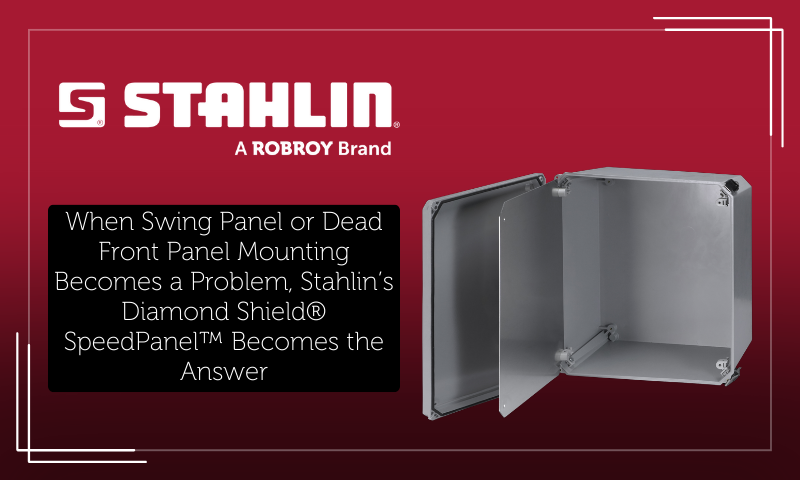Traditional Swing Panel and Dead Front Challenges: The Hidden Costs
OEMs live in a world where speed, precision, and adaptability aren’t luxuries—they’re mandates. Every minute spent navigating enclosure layout issues or customizing mounting hardware is time and money lost. And let’s be honest: traditional swing panel or dead front installation methods are too often a source of frustration. Misaligned mounting points. Limited flexibility. Wasted interior space. Tedious retrofits.
These problems compound across production lines and projects, especially when working in demanding industrial environments where reliability can’t be compromised.
For OEMs, designing and assembling control systems inside enclosures can be one of the most time-consuming steps in the integration process. Yet, many still rely on outdated swing panel or dead front panel mounting systems that introduce multiple challenges:
• Corner Post-style mounting systems often include multiple loose parts that must be installed in sequence, increasing the risk of missing components or misalignment.
• Fixed-size, inflexible panel kits limit the OEM’s ability to optimize space, especially in compact or high-density designs.
• Reduced accessibility during component mounting can lead to rework, longer test cycles, and increased labor costs.
• Field assembly increases installation time and introduces variability. Technicians often must work inside cramped enclosures to measure, drill, and align panels—tasks that are awkward and error-prone.
Over time, these inefficiencies can compound—impacting product timelines, quality assurance, and overall system reliability.
The Diamond Shield SpeedPanel: Designed for Speed and Simplicity.
The SpeedPanel system, part of the Stahlin Diamond Shield enclosure line, was developed to directly solve these pain points through a combination of innovative design and practical engineering.
Key Design Innovations
• External Pre-Assembly Capability
With SpeedPanel, OEMs can build out the swing panel on a bench—completely outside the enclosure. This reduces ergonomic strain, speeds up component layout, and streamlines wire routing before final placement.
• Molded-In Corner Mounting
Instead of requiring post kits or drilling modifications, the SpeedPanel hardware attaches directly to molded-in corner posts in the enclosure. This not only ensures consistent alignment but also reduces the total number of parts needed for installation.
• Standardized Hardware Across All Sizes
Whether working with a 6" × 6" enclosure or up to 20" × 16", the swing panel hardware kit remains the same—greatly simplifying inventory and training across different product lines.
• Clearances That Maximize Usable Space
Hidden hinges and inside cover mounting options open up more room for auxiliary components—critical for OEMs designing compact, multi-function systems.
Real-World Advantages
• Faster Builds: Technicians can cut panel installation time by up to 50% compared to legacy systems.
• Fewer Errors: With a consistent, pre-engineered system, variability is minimized.
• Improved Serviceability: Clear viewing windows and inside cover access simplify diagnostics and maintenance.
Built on the Diamond Shield Platform
The SpeedPanel is available exclusively for Stahlin’s existing Diamond Shield enclosures, engineered for high-performance OEM environments:
• Rated for NEMA 1, 3, 3S, 4, 4X, 12, 13 and IEC IP66 for indoor/outdoor, non-hazardous locations
• Certified to UL 508A, UL 50, UL 50e, UL 1741, UL 746C and IEC standards
• Constructed from SolarGuard® fiberglass for extreme UV and corrosion resistance
• Flammability Rating: UL94-5VA and NFPA No. 101 Flame Spread: Class A(1)
• Field-interchangeable covers (opaque, window, clear) to suit application needs
Why It Matters to OEMs
Swing panel or dead front mounting is more than just a step in the assembly process—it’s a critical phase where productivity, precision, and long-term reliability are won or lost.
Stahlin’s SpeedPanel system for Diamond Shield Enclosures redefines swing panel integration as a value-add, not an added cost. For OEMs seeking efficiency, consistency, and smarter use of enclosure space, it’s the clear choice.
